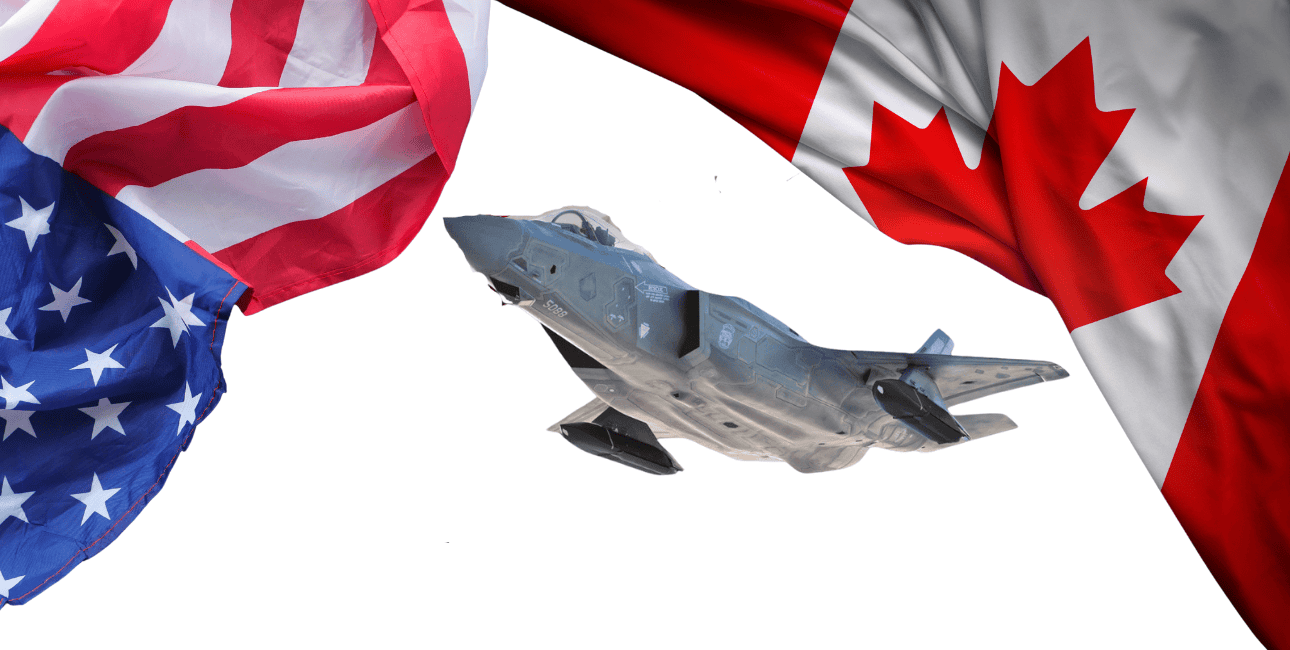Months after Canadian Prime Minister Mark Carney announced a reevaluation of the F-35 purchase amid growing hostility with the United States, a new audit report has warned of ‘skyrocketing’ costs, which could further complicate the acquisition of 88 F-35A Lightning II stealth fighters.
In January 2023, the Canadian government inked a CAD19 billion (US$14.2 billion) deal with Lockheed Martin to acquire 88 F-35 fighter jets in four tranches by 2032. The agreement was signed to replace the aging CF-18 fighter fleet of the Royal Canadian Air Force (RCAF).
However, Prime Minister Mark Carney announced earlier this year that he would review the purchase of the F-35 (beyond the 16 that have been paid for), as US President Donald Trump imposed unprecedented tariffs on Canada and made repeated calls to make the country the 51st state of the US.
Carney also announced that the RCAF will be looking for alternatives to the F-35 fighter, particularly in Europe.
As per the latest reports, Canadian officials will decide this summer on whether to proceed with the purchase of 88 F-35 fighter jets. Notably, this review may be impacted by a new audit report that warns of a significant increase in the cost of acquiring the F-35A by the RCAF.
An Unprecedented Rise In F-35A Cost For Canada
Published June 10, a new report from Auditor General Karen Hogan states that the planned purchase of 88 F-35A fighters by Canada is facing a host of challenges: skyrocketing costs, a lack of critical infrastructure, and a shortage of trained pilots.
During his audit of the F-35 program, Hogan looked at whether National Defense’s plan to purchase the aircraft was on track and under budget. Both areas were found to be replete with troubles. “This is a large, multi-year project that requires active and ongoing management of risks and costs to ensure that the CF-35 fleet can be brought into service on time,” Hogan said in a statement.
According to the audit report, the estimated cost of the F-35 program has climbed to CAD 27.7 billion, up from the CAD 19 billion projection made by the National Defense in 2023. This is almost 50% more than initially anticipated and does not include the weapons that the aircraft will be equipped with or the necessary upgrades to vital infrastructure.
The audit estimates that at least an additional CAD 5.5 billion would be needed to secure weapons and vital infrastructure, such as operational bases.
It further noted that the National Defense’s announcement of the purchase was based in part on out-of-date cost projections, which did not reflect the changing realities. “We found that an important part of the increase in the department’s updated cost estimates of CA$27.7 billion was caused by global factors, specifically: rising inflation; fluctuations in foreign exchange rates, and heightened global demand for munitions.”

While the audit report has certainly raised concerns, it is not the first time the issue of skyrocketing costs has been highlighted in Ottawa.
A Parliamentary Budget Office (PBO) report published in November 2023 estimated that the cost to Canadian taxpayers of owning and operating a fleet of F-35 fighter jets over the next 45 years would reach a whopping US$73.9 billion. This calculated sum included the aircraft’s life cycle costs, from planning and development to use and disposal, as previously reported by the EurAsian Times.
At the time, the PBO categorically mentioned that if the Air Force does not accept the aircraft on time and does not operate the fighters within the bounds that defense planners anticipate, the aircraft’s lifespan cost will increase by default.
“Should there be delays in the delivery of these fighter jets for whatever reason, if there’s a slippage by a year, that would increase costs by about US$400 million. Or should there be a two-year slippage, the cost increase should be about US$700 million,” the budget officer said.
The purchase of the aircraft by Canada has been a stormy affair since the very inception of the F-35 program. A deal for 88 aircraft was announced in December 2022 after great reluctance shown by then-Prime Minister Justin Trudeau.
A deal was finally signed in January 2023, albeit to significant domestic criticism from angry taxpayers. And, amid increasing tensions with Washington, these taxpayers have rallied to call for the nixing of the deal.
The F-35 Joint Strike Fighter is, without an iota of suspicion, the most expensive combat aircraft program in the world. The F-35A variant has a flyaway cost of about US$82.5 million per unit. Moreover, export prices typically include additional costs, pushing the effective unit cost to around US$100-110 million, sans the weapon package. Additionally, operating costs, subsequent upgrades, and spares increase the life-cycle costs of the F-35s.
Lockheed Martin has promised Canada to create more jobs in the country if it remains committed to procuring the 88 F-35A fighters. However, the woes associated with this acquisition are never-ending.
Adding to this cocktail of rising costs, the US has warned that Canada is also unprepared to host and fly the ace American stealth fighter.

Canada Is Unprepared To Host F-35
The audit report also noted that the US authorities have warned that the Canadian military lacked the facilities necessary to house the F-35 stealth fighter jet, requiring a redesign of the structures and additional expenses for Canadian taxpayers.
Hangars and other facilities being constructed in Canada to store the F-35 aircraft are subject to American approval as part of the deal. Typically, these kinds of rules are considered necessary to protect the American technology outfitted on the stealth fighters. However, the report stated that such requirements were not met for the infrastructure that was initially constructed at military sites in Bagotville, Quebec, and Cold Lake, Alberta.
The US Joint Strike Fighter Program Office, which oversees consistent F-35 maintenance and operation, including those in foreign service, noted that Canada wasn’t prepared to receive the aircraft due to persistent issues.
“In June 2024, the Joint Strike Fighter Program Office conducted an assessment of the interim operations plan to determine how ready National Defence was to support the first aircraft arrival in Cold Lake in December 2028,” Hogan noted in the report. “The overall rating for this assessment was ‘RED,’ meaning that significant issues remained unresolved and required senior leadership action.”
These bases were originally scheduled to be operational by 2028, when Canada was expected to begin receiving its first F-35 deliveries, but the deadline has been rescheduled for 2031. According to the report, National Defense decided that the design needed to be modified to meet certain F-35 specifications, which caused the construction to be delayed.
Against that backdrop, the National Defense was compelled to create an interim operations plan that included using mobile facilities and remodeling existing facilities, as the fighter squadron’s primary operational locations were unfit for service.
However, the audit report stated that the requirement for a temporary facility would raise the overall anticipated cost of the fighter aircraft program’s infrastructure.
If this were not enough, Canada also lacks experienced pilots who are qualified to fly the F-35. The Royal Canadian Air Force will require more skilled pilots “to make the CF-35A fleet fully operational,” said Hogan’s report, adding that the rising expenses and infrastructural delays present a barrier.
The audit also gave Canada an update on when its F-35s will be delivered. Although Canada originally contributed funds for 16 jets, Lockheed Martin stated that it would only be able to provide Canada with 12 jets shortly.
Of these, the Luke Air Force Base in Arizona will receive the first eight of those aircraft between 2026 and 2027. The final 80 aircraft will be shipped straight to Canada beginning in 2028. If Canada fulfills the entire contract, the final plane will arrive in 2032.



